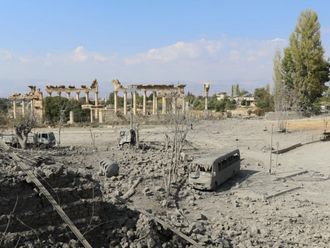Chicago: Tens of millions of people in Bangladesh have been exposed to toxic levels of arsenic from drinking contaminated groundwater, putting them at risk of an early death, US researchers said on Friday.
They said more than 20 per cent of deaths in a 10-year study of 12,000 Bangladeshis were caused by arsenic exposure from contaminated drinking water.
"Tens of millions of people there are at high risk of dying early. Something needs to be done urgently to reduce the exposure to arsenic for this population and find alternative, safe drinking water sources," said Dr Habibul Ahsan of the University of Chicago Medical Centre, whose study appears in the Lancet.
Arsenic causes cancer and is toxic to the liver, skin, kidney and the cardiovascular system.
Ahsan said the West Bengal region of India, Argentina, Chile and parts of Mexico and the US states of Nevada, New Mexico and New Hampshire have areas where people drink groundwater from arsenic-contaminated wells.
Toxic levels
Ahsan's team estimates as many as 77 million people, or half the population of Bangladesh, have been exposed to toxic levels of the poisonous element since the installation of hand-pumped wells to tap groundwater in the South Asian country in the 1970s. The World Health Organisation said in a statement the exposure was "the largest mass poisoning of a population in history".
The study is the first to measure the relationship between individual arsenic intake and the increased risk of death, but the problem is not unique to Bangladesh, Ahsan said in a telephone interview.
The team studied Bangladesh because so much of that nation's population — 90 per cent — uses groundwater as their primary source of fresh water, he said.
"There are other countries in the world where arsenic in drinking water is also a public health problem. It may not be the same scale as in Bangladesh," Ahsan said.
For the study, Ahsan's team measured arsenic levels in drinking water and in the urine of 12,000 people in Bangladesh from 2000 to 2002. Teams of doctors also did health assessments every two years.
After six years, they compared arsenic exposure rates to the rates of death in the study.
They found that in the top 25 per cent of people with the highest arsenic exposure, the risk of dying during the six years increased by nearly 70 percent compared with people with low arsenic levels.












